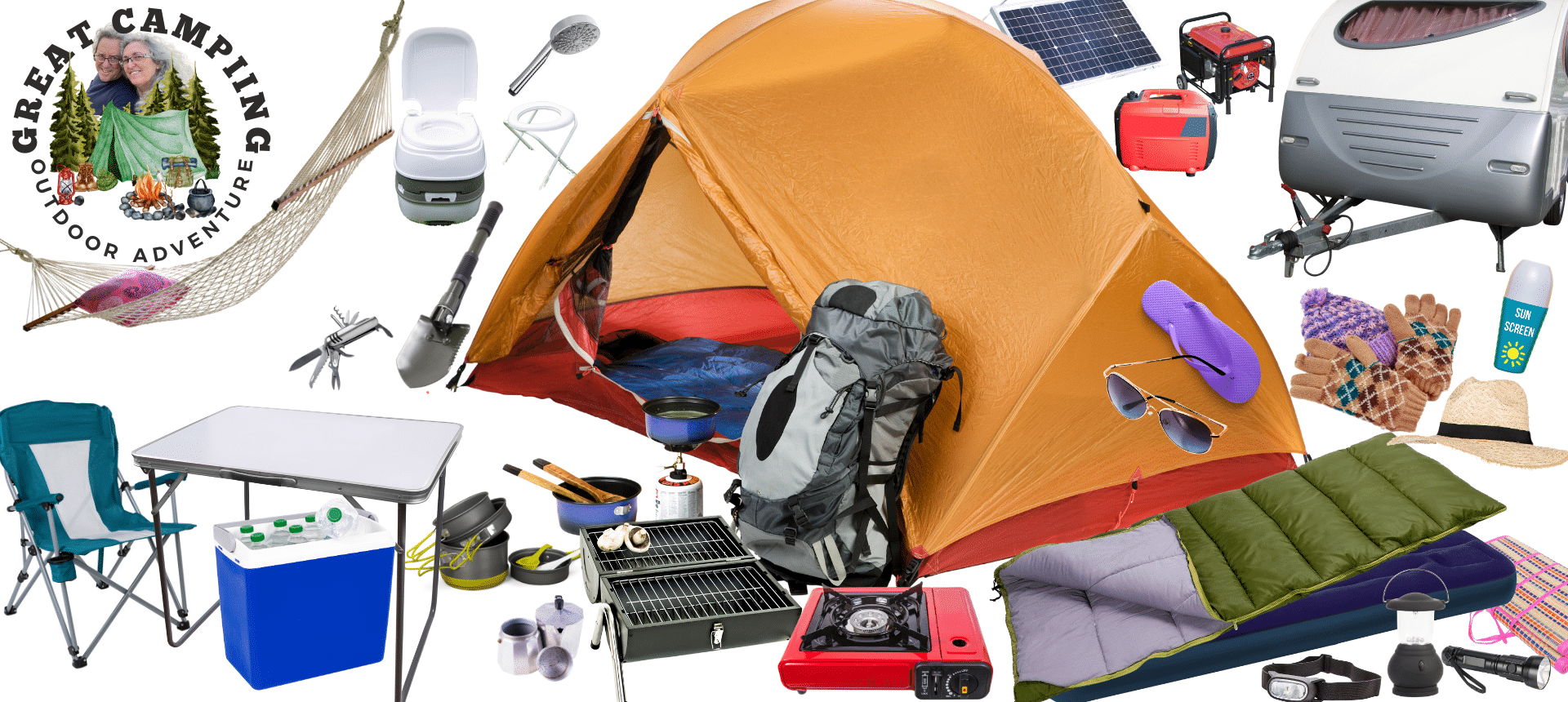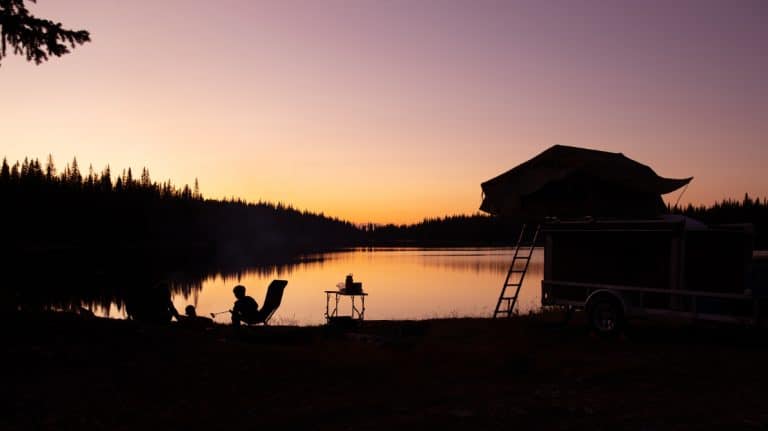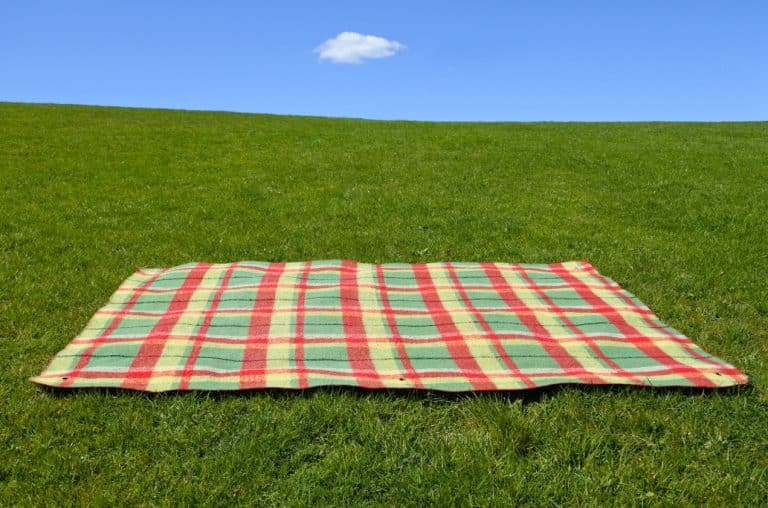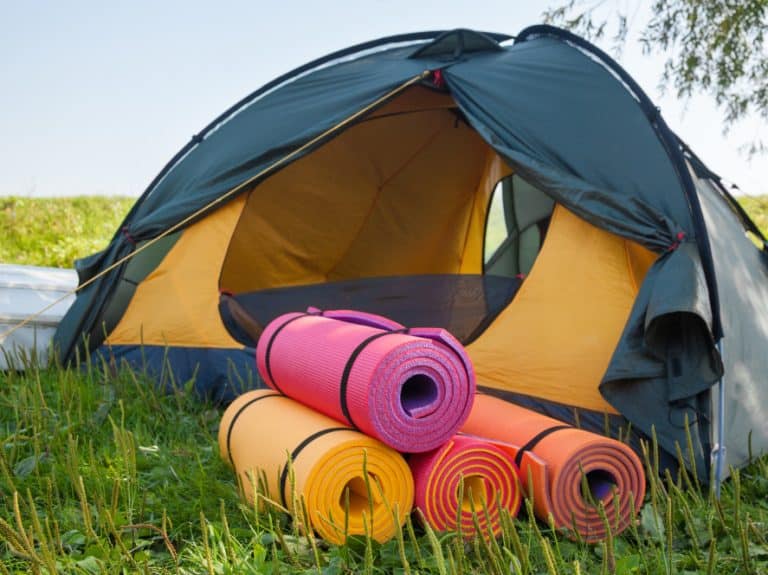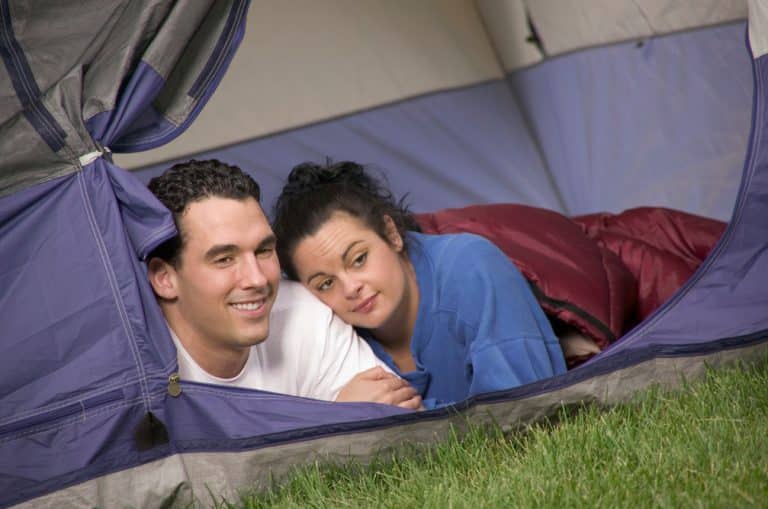Selecting the perfect sleeping bag is critical to planning a successful camping trip, as it can significantly impact your comfort and warmth during nights spent outdoors. This article will discuss the essential factors to consider when purchasing a sleeping bag, helping you make an informed decision that caters to your needs and preferences.
From understanding temperature ratings and insulation types to choosing the proper shape, size, and additional features, we will guide you through the crucial points to pay attention to, ensuring you find the ideal sleeping bag for your next camping adventure. Read on to discover how to select the perfect sleeping bag that will keep you cozy, warm, and well-rested throughout your outdoor escapades.
Sleeping bags shapes
Sleeping bags come in various shapes to cater to different comfort preferences, intended uses, and weather conditions. The three most common sleeping bag shapes are rectangular, semi-rectangular (barrel-shaped or modified mummy), and mummy. Here is an overview of these shapes and their advantages and disadvantages:
Rectangular sleeping bags
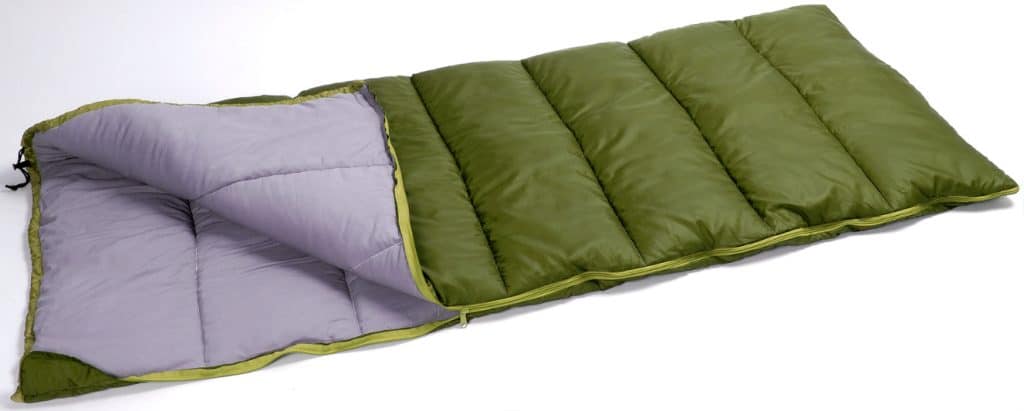
- Advantages: Rectangular bags offer the most room and freedom of movement, making them ideal for those confined in narrower bag shapes. They can also be fully unzipped and used as a blanket or zipped with another rectangular bag to create a double-sized sleeping bag.
- Disadvantages: Their spacious design makes rectangular bags less thermally efficient and may be less warm than other shapes. They also tend to be bulkier and heavier, making them less suitable for backpacking or long-distance hiking.
Semi-rectangular sleeping bags
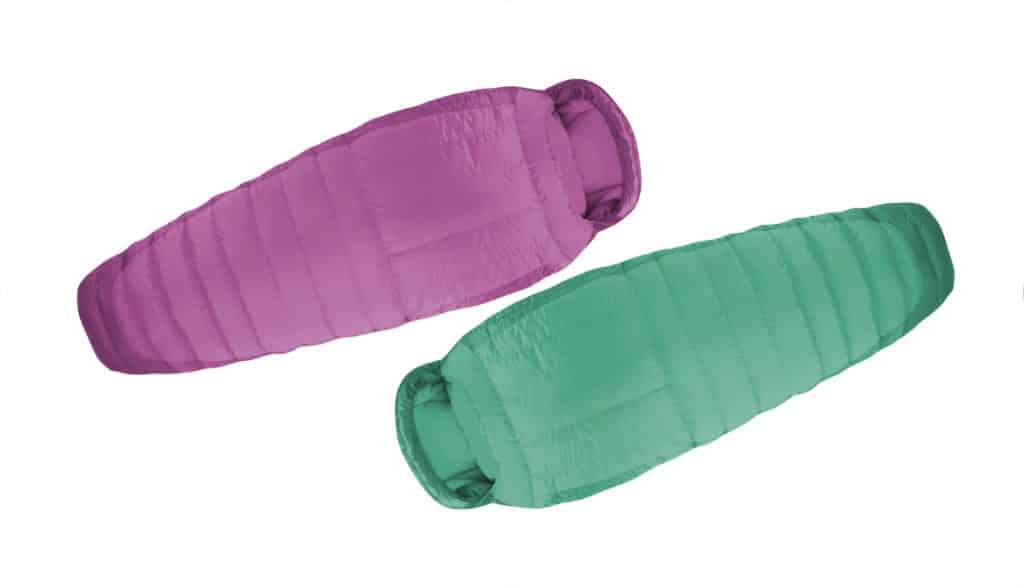
- Advantages: Semi-rectangular bags strike a balance between warmth and roominess, offering more space than mummy bags while providing better heat retention than rectangular bags. This versatile shape appeals to a wide range of campers and backpackers and is suitable for various temperatures and conditions.
- Disadvantages: While semi-rectangular bags are more thermally efficient than rectangular ones, they may not offer the same warmth as mummy bags. They can also be somewhat bulkier and heavier than mummy bags, though they are generally lighter and more packable than rectangular bags.
Mummy sleeping bags
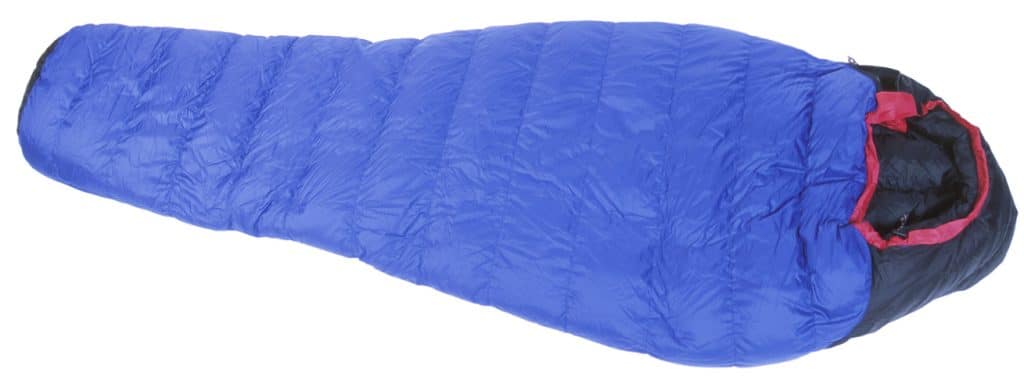
- Advantages: Mummy bags are designed for maximum warmth and insulation, with a tapered shape that reduces dead air space, and traps body heat more effectively. They typically have an adjustable hood to help retain heat around the head and face. Due to their lightweight and compact design, Mummy bags are preferred for cold-weather camping, high-altitude expeditions, and backpacking.
- Disadvantages: The narrow, tapered shape of mummy bags can feel restrictive for those who prefer more room to move around while sleeping. Additionally, mummy bags may not be as versatile for warmer weather camping, as they can be too warm for some conditions.
When choosing a sleeping bag shape, consider factors like personal comfort, intended use, and expected weather conditions. By considering these aspects, you can select a sleeping bag that will provide the perfect balance of warmth, comfort, and packability for your camping adventures.
Sleeping Bag Temperature Ratings
Sleeping bag temperature ratings are essential when choosing a sleeping bag for camping. These ratings estimate the lowest temperature in the sleeping bag will keep you warm and comfortable. They are generally divided into the following categories:
Winter Sleeping Bags
Winter sleeping bags are designed for cold weather camping and high-altitude expeditions, providing warmth and insulation in temperatures below +10°F (approximately -12°C). They are constructed with features and materials that help retain heat and protect you from the elements. Here are some essential aspects to consider when looking at winter sleeping bags:
- Insulation: Winter bags typically use down or synthetic insulation. Down insulation offers a superior warmth-to-weight ratio and compressibility, but its insulating properties diminish when wet. Synthetic insulation is bulkier and heavier, but it retains warmth even when damp, making it suitable for wet or humid environments.
- Temperature rating: Choose a winter sleeping bag with a temperature rating appropriate for the coldest conditions you expect to encounter. Keep in mind that individual comfort levels may vary, and it’s better to have a bag rated for colder temperatures than needed rather than not being warm enough.
- Shape: Most winter sleeping bags are mummy-shaped, as the tapered design reduces dead air space and provides better insulation. The snug fit helps retain body heat, and the hood can be cinched tight to minimize heat loss through the head.
- Baffle construction: Baffles are the compartments that hold insulation in place within the sleeping bag. In winter bags, look for features like box or slant baffle construction, which helps prevent down from shifting and eliminates cold spots.
- Draft tubes and collars: Winter sleeping bags often have draft tubes along the zippers and draft collars around the neck and shoulders. These features help seal in warmth and prevent cold air from entering the bag.
- Shell and lining materials: The outer shell of a winter sleeping bag should be made of durable, water-resistant material to protect against moisture and condensation. The inner lining should be comfortable and breathable, with materials like polyester or nylon being popular choices.
- Weight and packability: While warmth and insulation are top priorities in a winter sleeping bag, weight, and compressibility are still important considerations, especially for backpackers or mountaineers. Down-insulated bags tend to be lighter and more packable, while synthetic bags may be bulkier and heavier.
- Additional features: Some winter sleeping bags may come with extra features like internal stash pockets, glow-in-the-dark zipper pulls, or pad attachment systems. These can enhance your comfort and convenience while camping in cold conditions.
When selecting a winter sleeping bag, consider the expected weather conditions, your personal comfort preferences, and any additional features that may be important to you. Considering these factors, you can choose the ideal winter sleeping bag to keep you warm and comfortable during your cold-weather adventures.
Three-season bags
Three-season sleeping bags are designed for spring, summer, and fall, making them versatile and suitable for various camping scenarios. These bags typically provide warmth and comfort for temperatures ranging from +10°F to +35°F (approximately -12°C to +2°C). Here are some key features and considerations for three-season sleeping bags:
- Insulation: Three-season bags can be found with both down and synthetic insulation. Down insulation provides a better warmth-to-weight ratio and is more compressible, making it an ideal choice for backpackers. However, it is less effective when wet. On the other hand, synthetic insulation is bulkier and heavier but retains its insulating properties even when damp.
- Shape: These sleeping bags come in various shapes, such as mummy, rectangular, and semi-rectangular. Mummy-shaped bags are more thermally efficient due to their tapered design, which reduces dead air space. Rectangular bags offer more room for movement but are less efficient in retaining warmth. Semi-rectangular bags strike a balance between the two.
- Weight and packability: Weight and compressibility are essential factors, especially for backpackers. Down-insulated three-season bags are generally lighter and more compressible than synthetic ones. Choose a bag that fits your needs in terms of weight and packability without sacrificing comfort.
- Additional features: Many three-season sleeping bags include features like draft collars, hoods, and stash pockets. Draft collars help seal in warmth around the neck and shoulders, while hoods offer additional insulation for the head. Stash pockets can be convenient for storing small items like a phone, headlamp, or earplugs.
- Zipper compatibility: Some three-season sleeping bags come with left and right zipper options, allowing you to zip two compatible bags together to create a double sleeping bag. This feature can be useful for couples or families camping together.
When choosing a three-season sleeping bag, consider your camping conditions, personal comfort preferences, and any additional features you may require. Considering these factors, you’ll be well-equipped to select the ideal three-season sleeping bag for your outdoor adventures.
Summer season sleeping bags
Summer season sleeping bags are designed for camping in warm weather conditions, with temperature ratings around +35°F (approximately +2°C) and higher. These bags prioritize lightweight construction and breathability, making them ideal for warm nights. Here are some key features and considerations for summer sleeping bags:
- Insulation: Summer bags usually feature lightweight insulation, such as down or synthetic materials. Down insulation offers better compressibility and a higher warmth-to-weight ratio, while synthetic insulation performs better in damp conditions, retaining its insulating properties even when wet.
- Shape: Summer sleeping bags come in various shapes, such as rectangular, semi-rectangular, and mummy. Rectangular bags offer more room for movement but may not be as thermally efficient. Semi-rectangular bags provide a balance between comfort and warmth, while mummy bags are more tapered and offer better heat retention.
- Weight and packability: As summer season bags prioritize lightweight construction, they are typically lighter and more compressible than three-season or winter bags. This makes them a popular choice for backpackers and travelers who need to minimize the weight and size of their gear.
- Ventilation: Proper ventilation is essential for warm-weather camping, as it helps prevent overheating and improves comfort. Many summer sleeping bags feature full-length zippers, allowing you to open them up entirely for better airflow. Some models also have two-way zippers, enabling you to ventilate the foot box area separately.
- Moisture-wicking lining: A moisture-wicking lining can help keep you dry and comfortable in warm and humid conditions. Look for materials like polyester or other moisture-wicking fabrics that can help manage sweat and moisture inside the bag.
- Temperature rating: While summer sleeping bags are designed for warm weather, choosing a bag with a temperature rating that aligns with the nighttime temperatures you expect to encounter is essential. If you camp in areas where temperatures can drop significantly at night, consider a bag with a slightly lower temperature rating.
- Additional features: Some summer sleeping bags may include features such as pillow pockets, stash pockets for small items, or pad attachment systems to keep the sleeping bag and pad securely together. These added features can enhance your comfort and convenience during warm-weather camping.
When selecting a summer-season sleeping bag, consider the expected temperatures, your personal comfort preferences, and any additional features that may be important to you. Considering these factors, you can choose the ideal summer sleeping bag for comfortable and restful nights during your warm-weather adventures.
Extreme cold weather bags

Extreme cold weather sleeping bags are designed for harsh winter conditions and high-altitude expeditions, providing maximum warmth and insulation in temperatures well below 0°F (approximately -18°C) and even as low as -40°F (-40°C). These bags are constructed with specialized materials and features to protect you from extreme cold and adverse weather conditions. Here are some essential aspects to consider when looking at extreme cold weather sleeping bags:
- Insulation: Extreme cold weather bags typically use high-quality down insulation due to its excellent warmth-to-weight ratio and compressibility. Down insulation with a high fill power (800 and above) provides greater insulation and loft. Synthetic insulation may sometimes be used, especially in damp environments where down may lose its insulating properties.
- Temperature rating: Choose an extremely cold weather sleeping bag with a temperature rating suitable for the coldest conditions you expect to face. Remember that individual comfort levels may vary, and it’s always better to have a bag rated for colder temperatures than needed.
- Shape: Most extreme cold weather sleeping bags are mummy-shaped, as the tapered design reduces dead air space and provides superior insulation. The snug fit helps retain body heat, and the hood can be cinched tight to minimize heat loss through the head.
- Baffle construction: Baffles are the compartments that hold insulation in place within the sleeping bag. In extremely cold weather bags, look for features like box, slant, or trapezoidal baffle construction, which helps prevent down from shifting and eliminates cold spots.
- Draft tubes and collars: To seal in warmth and prevent cold air from entering the bag, extremely cold weather sleeping bags often have draft tubes along the zippers and draft collars around the neck and shoulders. These features are crucial for maintaining warmth in harsh conditions.
- Shell and lining materials: The outer shell of an extremely cold weather sleeping bag should be made of durable, water-resistant, and windproof material to protect against moisture and harsh elements. The inner lining should be comfortable, breathable, and moisture-wicking, with popular choice materials like polyester or nylon.
- Weight and packability: While warmth and insulation are the top priorities in an extreme cold weather sleeping bag, weight, and compressibility are still important considerations, especially for mountaineers or polar explorers. Down-insulated bags tend to be lighter and more packable, while synthetic bags may be bulkier and heavier.
- Additional features: Some extreme cold weather sleeping bags may come with extra features like internal stash pockets, glow-in-the-dark zipper pulls, or pad attachment systems. These can enhance your comfort and convenience while camping in extremely cold conditions.
When selecting an extreme cold weather sleeping bag, consider the expected weather conditions, your personal comfort preferences, and any additional features that may be important to you. Considering these factors, you can choose the ideal sleeping bag to keep you warm and protected during your coldest adventures.
Zippers

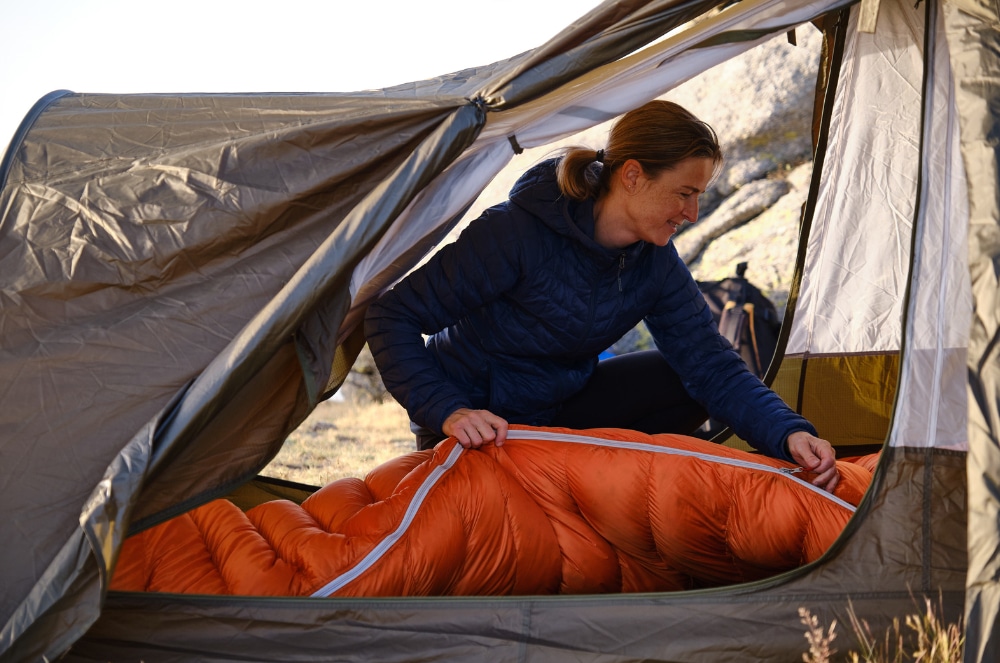
Sleeping bag zippers are essential in providing easy access, ventilation, and secure closure for your sleeping bag. There are several factors to consider when looking at sleeping bag zippers to ensure optimal functionality and durability. Here are some important aspects of sleeping bag zippers:
- Zipper length: Sleeping bags usually feature full-length, three-quarter, or half-length zippers. Full-length zippers provide the easiest access and greatest versatility, allowing you to fully open the sleeping bag for ventilation or use as a blanket. Three-quarter and half-length zippers save weight and provide some ventilation options but may limit access and versatility.
- Zipper side: Sleeping bags can have left-sided or right-sided zippers. This is especially important if you plan to zip two sleeping bags together, as you’ll need one left-sided and one right-sided zipper for compatibility. Some manufacturers offer sleeping bags with either left or right zippers, so make sure to choose the one that suits your needs.
- Two-way zippers: Many sleeping bags feature two-way zippers, allowing you to open the zipper from the top and bottom. This feature is helpful for additional ventilation, especially in warmer weather, as it lets you open the bottom of the bag for airflow around your feet while still keeping the top closed for warmth.
- Draft tube: A draft tube is an insulated tube that runs alongside the zipper to prevent cold air from entering and warm air from escaping through the zipper. This feature is especially important in colder weather or for three-season and winter sleeping bags. Look for a well-insulated, durable draft tube to enhance the thermal efficiency of your sleeping bag.
- Zipper quality and durability: High-quality zippers are essential for the longevity and functionality of your sleeping bag. YKK zippers are widely regarded as some of the best in the industry, known for their durability and smooth operation. Opt for a sleeping bag with a durable, reliable zipper to avoid frustrations during your camping trips.
- Anti-snag features: Zippers can sometimes catch on the sleeping bag’s fabric, causing frustration and potentially damaging the bag. Many sleeping bags come with anti-snag features, such as zipper guards or stiffened fabric near the zipper, to reduce the likelihood of snagging and ensure smooth operation.
- Locking zippers: Some sleeping bags feature locking zippers, which stay securely closed when you want them to and prevent the zipper from accidentally opening while you sleep. This can be a useful feature for restless sleepers or for those who toss and turn throughout the night.
When choosing a sleeping bag, pay attention to the zipper features, as they can greatly affect your overall comfort, warmth, and ease of use. A high-quality, reliable zipper with appropriate length and additional features like draft tubes and anti-snag guards can enhance your camping experience and ensure a good night’s sleep.
Pockets
Sleeping bags with pockets offer added convenience and functionality, allowing you to keep essential items close at hand during your camping trip. These pockets are typically designed to store small items, such as smartphones, headlamps, or glasses, and can be found in various locations on the sleeping bag. Here are some common types of pockets found in sleeping bags:
- Internal pockets: Internal pockets are located within the sleeping bag’s lining, providing a secure and discreet place to store valuables or items you may need during the night. These pockets often have a zippered or hook-and-loop closure to keep the contents secure and are usually positioned near the chest or shoulder area for easy access.
- External pockets: Some sleeping bags feature external pockets, typically located on the side or near the top of the bag. These pockets can be used to store items that you want to access quickly or that don’t need to be kept inside the bag for warmth. However, be aware that items stored in external pockets may be more susceptible to moisture or condensation.
- Pillow pockets: A few sleeping bags come with a dedicated pillow pocket, allowing you to stuff clothing or a small camping pillow inside to create a comfortable headrest. This feature can help save space in your pack by eliminating the need for a separate pillow and ensuring that your pillow stays in place throughout the night.
- Sleeve pockets: Some sleeping bags, especially those designed for ultralight backpacking or minimalist camping, feature sleeve pockets that can accommodate a sleeping pad. These pockets help secure the sleeping pad, preventing it from shifting during the night and ensuring a comfortable, stable sleeping surface.
Conclusion
When choosing a sleeping bag with pockets, consider which types of pockets would be most useful for your needs and camping style. Keep in mind that additional pockets may add slight weight and bulk to the sleeping bag, so weigh the benefits against any potential drawbacks before making a decision. Overall, sleeping bags with pockets can enhance your camping experience by providing convenient storage solutions and added comfort.
Sleeping Bag FAQs
Consider the temperature rating, insulation type, weight, size, shape, and additional features like hoods and zipper compatibility to find the perfect sleeping bag for your camping needs.
The temperature rating indicates the lowest temperature at which the sleeping bag is designed to keep you warm. Choose a sleeping bag with a temperature rating appropriate for the conditions you expect to encounter during your camping trip.
The two primary types of insulation are down and synthetic. Down insulation is lighter, more compressible, and provides better warmth-to-weight ratio but can be more expensive and less effective when wet. Synthetic insulation is cheaper, maintains warmth when wet, and dries faster but can be bulkier and heavier.
Avoid compressing the sleeping bag when storing it long-term. Instead, store it in a large, breathable storage sack or hang it up to prevent insulation from getting compressed and losing its loft.
Some sleeping bags feature zippers that can be connected, creating a double sleeping bag. Check the specifications of your sleeping bags to ensure they are compatible, and make sure both bags have the same zipper length and type.
Follow the manufacturer’s instructions for cleaning. In general, avoid using harsh detergents and high heat. Hand-washing or using a gentle cycle in a front-loading washing machine is preferred. Air dry the sleeping bag or use a low-heat setting in a dryer, and periodically redistribute the insulation to ensure even drying.
